Teeltadvies Categories: Anthurium pot plants
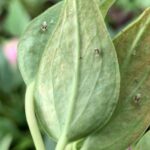
Availability of future plant protection products and alternatives for Anthurium
Found in:29 April 2024
The use of chemical plant protection products in greenhouse horticulture has been under a magnifying glass for some time. The number of available plant protection products has been declining for years and will fall by another 40 per cent between 2023-2027.

Entomopathogenic fungi prove useful in controlling Parvispinus thrips
Found in:19 September 2023
Parvispinus trips (pepertrips) vormt sinds ruim twee jaar wereldwijd regelmatig problemen in de teelt van Anthurium. De trips is aanmerkelijk lastiger te beheersen dan de andere bekende tripsen voor Anthurium zoals Californische trips of Echinotrips. Dit jaar hebben we in de praktijk goede resultaten gezien van de inzet van entomopathogene (insectenparasitaire) schimmels tegen de pepertrips.
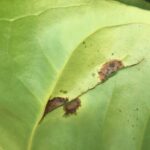
Anthurium and Xanthomonas
Found in:29 November 2022
A very dangerous disease caused by the bacterium Xanthomonas (X) can occur in Anthurium. It usually involves the bacterium Xanthomonas phaseoli pv. Dieffenbachiae (Xpd). The Xanthomonas, which is harmful to Anthurium, can occur in many different strains (types). There are mild variants where only a limited part of the range gets affected, but there are also aggressive types that spread widely and quickly.
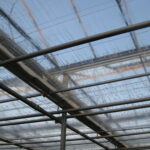
Energy saving opportunities in Anthurium
Found in:12 September 2022
In view of the current energy situation, the use of heating and lighting in cultivation must be minimized. This offers opportunities for Anthurium for which specific conditions must be met.
The guiding principle for a healthy Anthurium crop is to avoid major fluctuations. When the balance between root and plant activity is right, a quality product can be grown in an energy-friendly way. This article discusses the factors that can be taken into consideration.
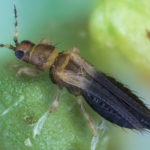
Silver lining in the approach to Tobacco Thrips
Found in:23 June 2022
Thrips causes considerable damage to plants and are difficult to control. Therefore, it is important to be alert for signs of Tobacco thrips so that prompt action can be taken. This edition focuses on the approach to Tobacco thrips (Thrips parvispinus).
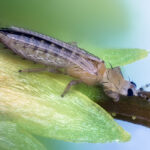
A more effective approach to thrips through proper identification
Found in:23 May 2022
Identifying thrips is difficult, because both the different thrips species and the larvae are often very similar. A diagnosis is difficult, sometimes insufficiently reliable and often takes (too) long. Then the question arose for us: ‘How can we do this faster and better?’ We started to work on this question.

Scouting a difficult newcomer: tobacco thrips
Found in:25 March 2022
It is important to be alert to signals of tobacco thrips, so that early intervention can be taken. In this article we pay attention to identifying and scouting tobacco thrips.

Substrate Anthurium pot plants
Found in:4 November 2021
The quality of a plant depends on the correct use of the right substrate with the right properties. One substrate is not the same as another: not only is there a lot involved in developing the composition, but consistent production and the correct method of use are important aspects when using substrates. Read all about substrate of Anthurium pot plants.

Threat monitoring
Found in:6 July 2021
In the cultivation of both Anthurium and Phalaenopsis, it is important to continuously monitor the cultivation. Growers strive to keep cultivation conditions constant throughout the year. Unfortunately, they have to deal with many different external influences. Besides insects, fungi and bacteria, inaccuracies in pH/EC, nutrient composition, starting water, etc. can have a major impact on the crop.
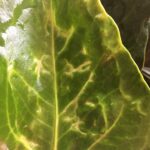
Thrips in Anthurium
Found in:2 March 2021
Worldwide, we are seeing a significant increase in thrips pressure in both cut flowers and pot Anthurium. In cut Anthurium, thrips can establish themselves in the crop and return every year to more or less the same places. This is often the case with thrips that are present on the leaves.
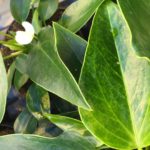
Thrips science in Anthurium and Phalaenopsis
Found in:25 March 2019
In this article, we want to draw attention to the different types of thrips that occur. The aim is to get to know this enemy better and to be able to react quicker and more effectively.

The influence of pH on cultivation
Found in:8 November 2018
In addition to carefully monitoring the nutrients and EC fed to the plants, we also pay a lot of attention to the pH of the feed water. Why do we do this? Why is the pH so important, and what is its influence on the plant?
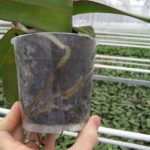
Pythium
Found in:23 March 2018
In the cultivation of Anthurium and Phalaenopsis, several fungi and bacteria can cause damage to the crop and subsequent plant failure. In this article, we are focusing on the fungus Pythium (root rot).

Plant activity for good plant health and growth
Found in:13 October 2017
Before we can talk about plant activity, it is a good idea to explain what this means exactly. It sometimes seems to be a bit of a buzzword: the plants and the climate must be ‘active’.

Humidity in the cultivation of Anthurium
Found in:2 June 2017
Besides temperature and light, humidity is the most important environmental factor for a plant to grow. In this article we discuss the importance of humidity and the influence that it has on the plant.
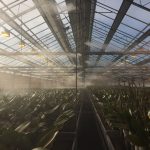
Humidity in cultivation
Found in:2 June 2017
Good humidity is of great importance for the Anthurium and Phalaenopsis plant.
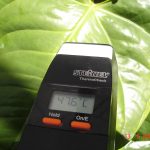
Measurement is the key to knowledge
Found in:16 February 2017
The cultivation of crops in the greenhouse horticulture sector requires optimal control of the greenhouse climate.

Optimal crop structure yields up to 40% higher production
Found in:16 February 2017
The main key to a successful cut Anthurium cultivation is the creation and maintenance of optimal crop structure
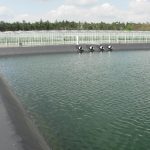
Healthy water as a basis for healthy cultivation
Found in:17 October 2016
Healthy irrigation water is of vital importance for healthy cultivation and a sound business. Fungal or bacterial infection in the plant, growth stagnation or impaired root growth is increasingly linked to irrigation with unhealthy (contaminated) water.

Root problems
Found in:2 August 2016
Healthy roots are the basis of a healthy plant. It is of the utmost importance to ensure that the root system stays healthy.
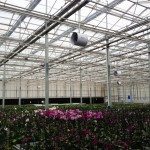
Climate
Found in:24 March 2016
The greenhouse climate is one of the main (if not the main) growth factor for the plant. Therefore, it is worth optimizing the greenhouse climate to further enhance production.

Hygiene in Anthurium and Phalaenopsis cultivation
Found in:29 February 2016
In the cultivation of Phalaenopsis and Anthurium there are several diseases for which a high hygiëne level is of great importance for prevention. There are several sources of infection and hygiëne measures which are explained in this article.

The purpose of chalking
Found in:7 December 2015
When you consider chalking, it is important to determine which goals you want to achieve, such as: – avoiding an excessive greenhouse temperature; – avoiding the entrance of too much light (caused by insufficient sun shading); – preventing uneven light distribution, the so-called ‘light strips’. Greenhouse temperature Temperature peaks occur due to a lack of […]
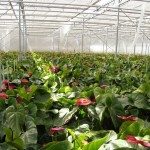
Allowing more light into the greenhouse
Found in:7 December 2015
Before more light is allowed into the greenhouse, it is useful to first bear in mind the preliminary conditions that have been established. In this article the four main preconditions are described and some cultivation-oriented recommendations are given.
